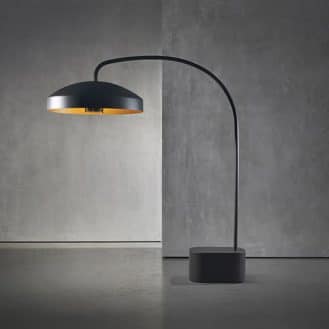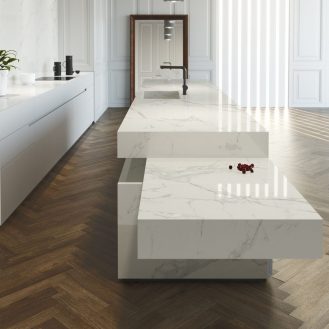
ZUMTOBEL Hanging Light Fixture
There are quite a number of light fixture installations available, and choosing between them will largely depend on the space you have and the application.
Hanging light fixtures are ideal for high ceilings and general lighting. Large and decorative hanging light fixtures can also make great focal points for reception areas in large buildings.
Ceiling mounted lights are normally used for general lighting and are more appropriate for lower ceilings.
Wall mounted lights come in a variety of shapes and styles and are used in a number of applications. They can be used for general lighting and path lighting in circulation areas as well as accent lighting or reading lighting for living areas and bedrooms.

MARTINELLI LUCE Recessed Ceiling Light
Recessed light fixtures are ideal for providing subtle uniform lighting, but it is important to plan for cut-out holes and wiring installations within the architectural design.
Recessed ceiling lights for general lighting are much more subtle than surface mounted or hanging lights, so they are great for minimalist spaces. Light fixtures designed to fit into existing ceiling grids are more economical though less aesthetic than made-to-measure designs.
Recessed floor or ground lights are great for highlighting vertical surfaces such as columns, walls and trees. It is important to consider how shock and water resistant they need to be if in high traffic areas or outdoors.
Recessed wall lights can be great for accent, pathway, staircase and corridor lighting.

DELTA LIGHT Track Light
Downlights are small ceiling lights with a downward beam. They are normally recessed into the ceiling but are also available in surface mounted versions. They are often installed in multiples for evenly distributed general lighting, but can also be used for accent lighting.
Spotlights can be orientable and used for accent lighting or fixed and used for general lighting. Common applications include museums and shops for display lighting and product highlighting.
Track lights are particularly used in retail, museum and display environments because they are easy to install, and individual light fixtures can be changed, orientated or moved along the track. This is ideal for environments where lighting needs to be reconfigured regularly to highlight different products or areas.
LED strip lights can be used for wall washing, backlighting or highlighting architectural features, furniture or decorations.











